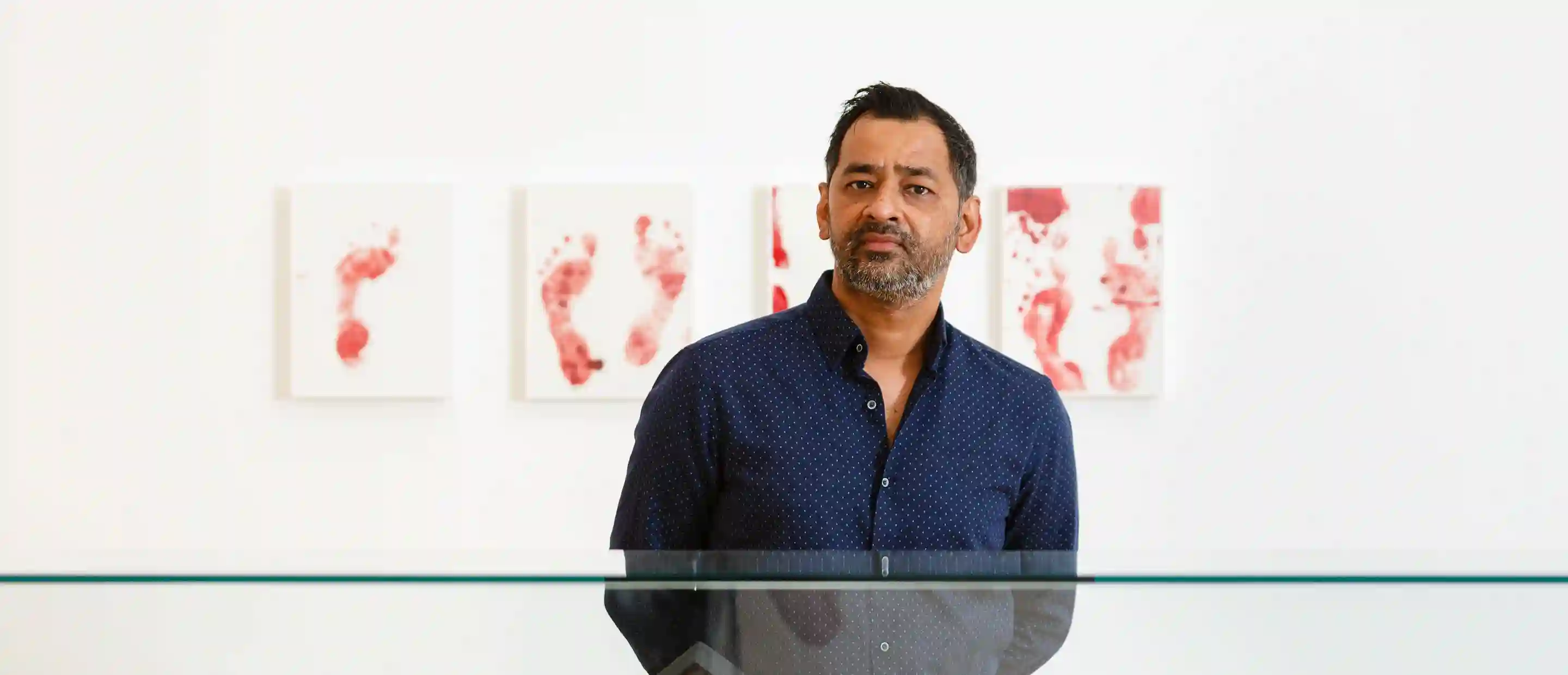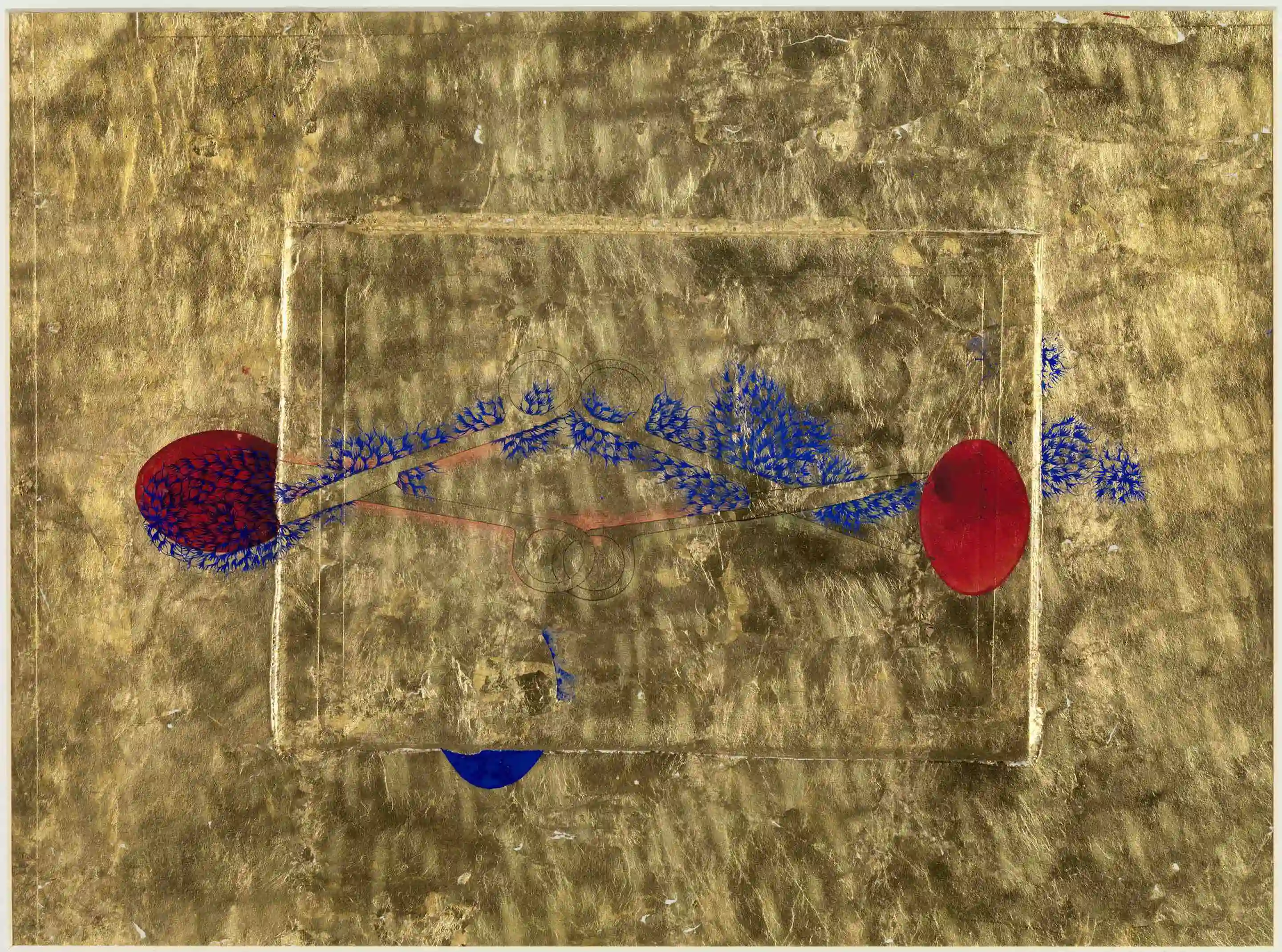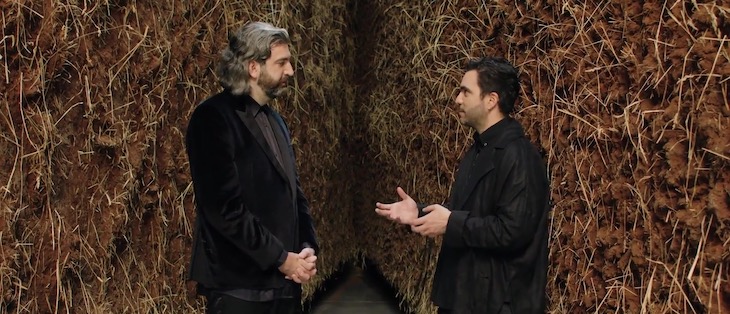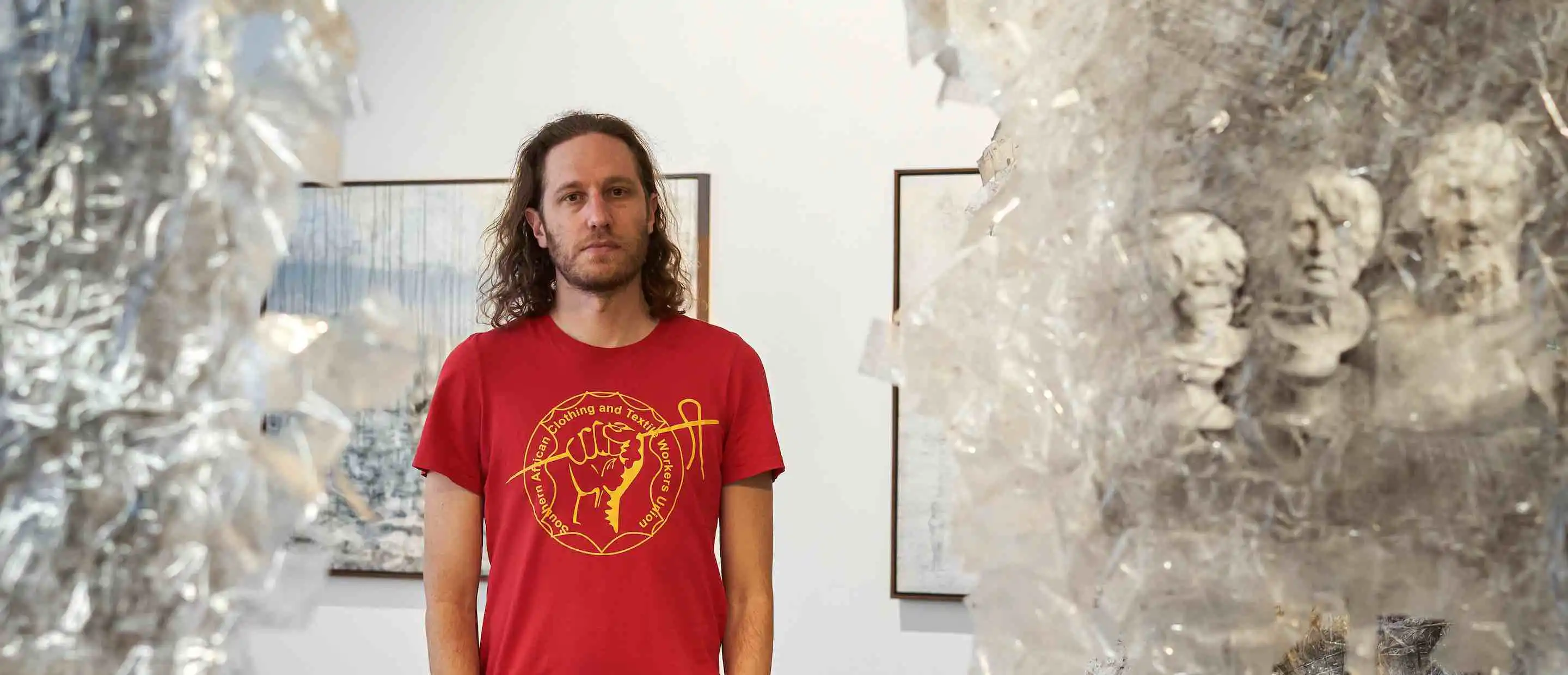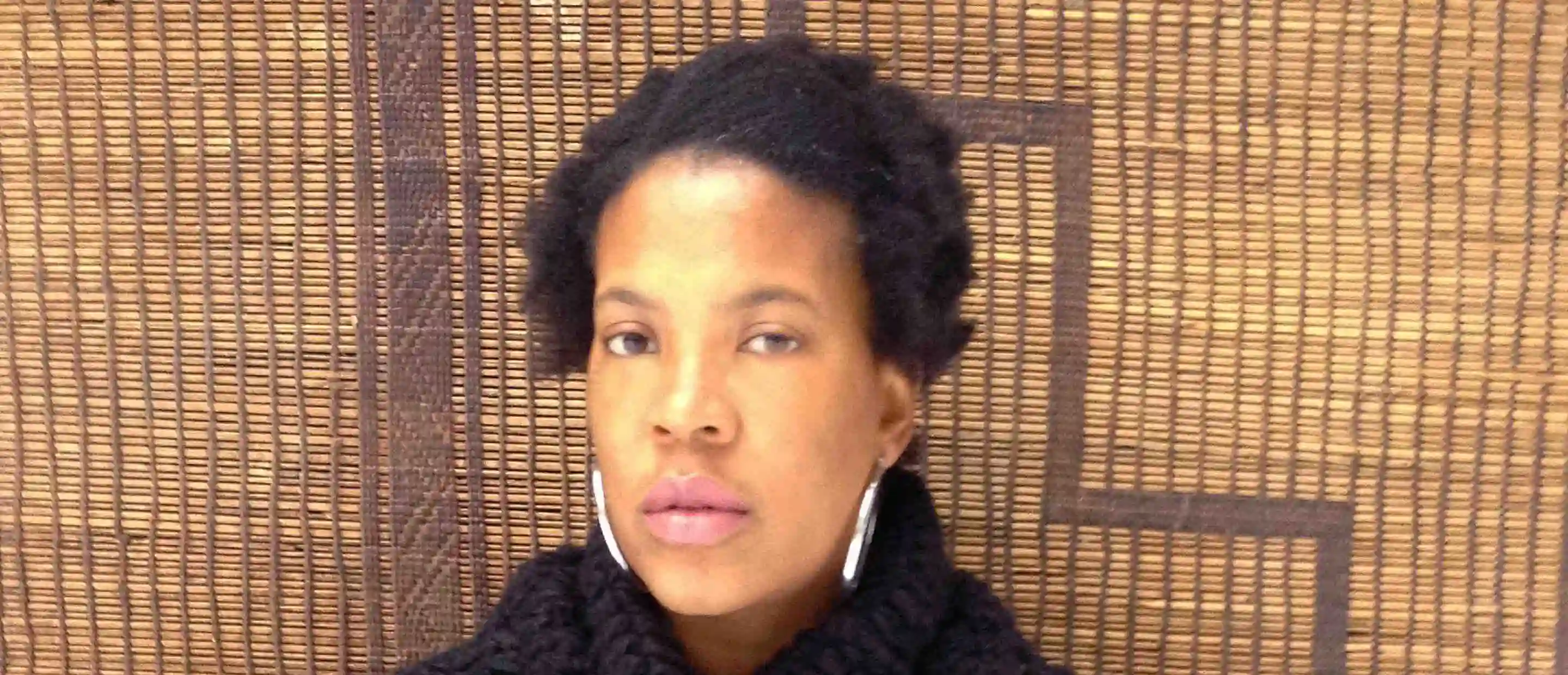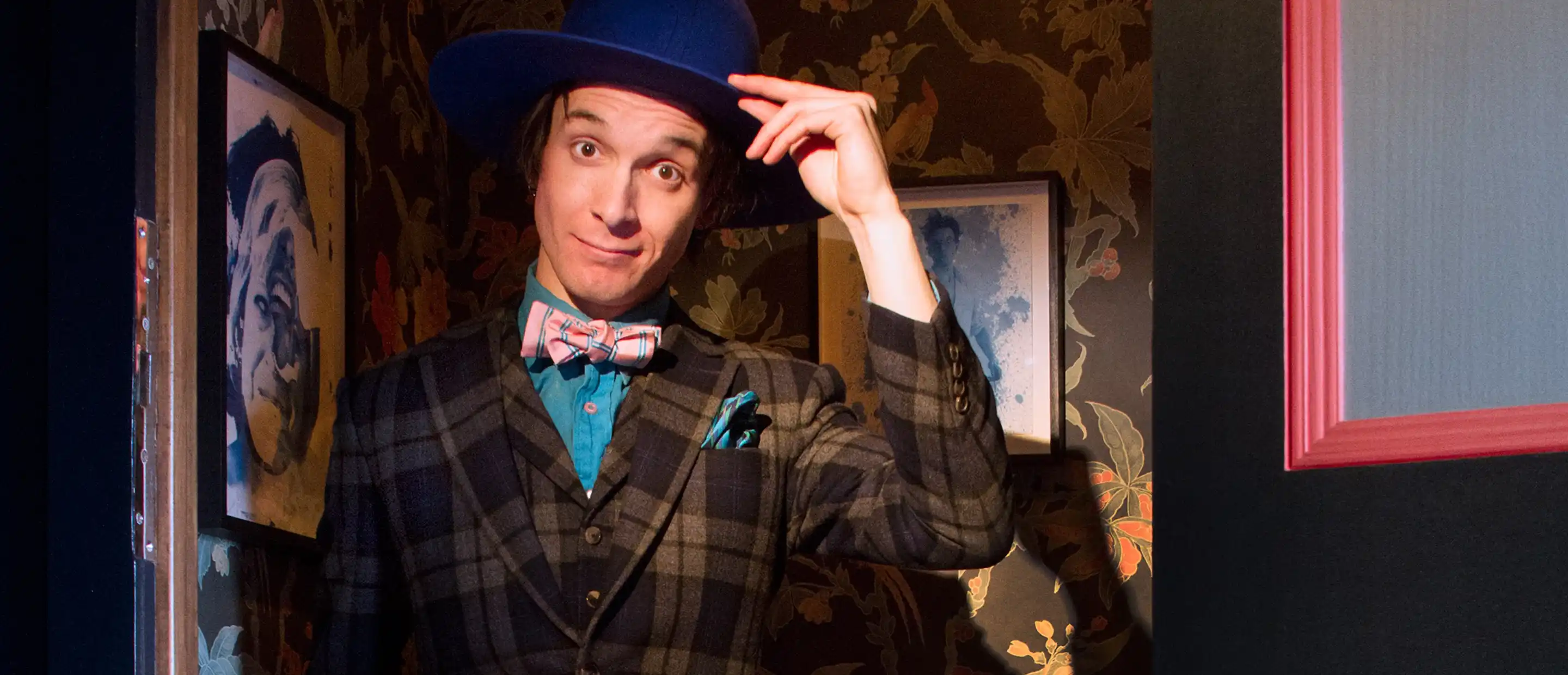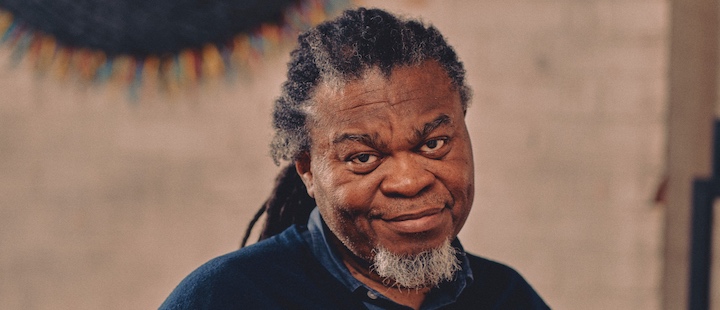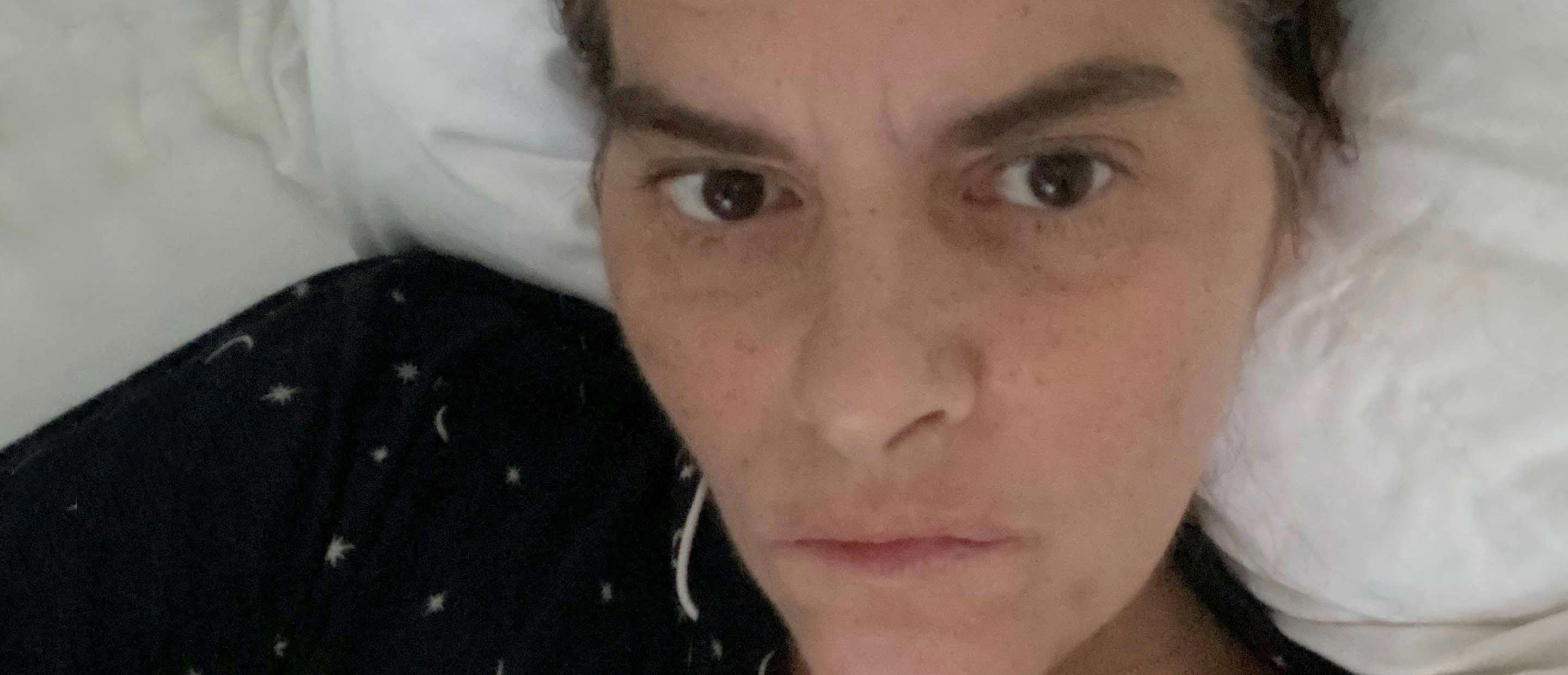Drawing from the ancient art form of Mughal miniature painting, the Pakistani artist Imran Qureshi (born 1972) has created new means of expression that address universal themes: violence, suffering, spirituality – and the hope for more humane societies.
Drawing from the ancient art form of Mughal miniature painting, the Pakistani artist Imran Qureshi (born 1972) has created new means of expression that address universal themes: violence, suffering, spirituality – and the hope for more humane societies.
Imran Qureshi comes from a country that has seen both upheaval and turmoil: Pakistan is still torn apart by political and religious conflict, everyday violence and corruption. But it is also a country on the move, drawing on a rich cultural tradition, where many people believe in a process of reflection and of a new, more tolerant society. Qureshi, who was named Deutsche Bank's “Artist of the Year” in 2013, is one of them. Trained in traditional Mughal miniature painting, he has developed a new visual language derived from this ancient art form from the 16th century. In his works, which can be as small as a postcard or encompass entire building complexes, he has repeatedly addressed the social situation in Pakistan.
Installations that inspire hope amid upheaval
He came to international attention in 2011 with “Blessings Upon the Land of My Love”, the award-winning installation he created for the 10th Sharjah Biennial in the United Arab Emirates. Seen from above, the white-paved courtyard of the former Bait Al Serkal Hospital looked like the aftermath of a suicide bombing: an unimaginable explosion of dark red splashing over the walls of the building, dripping from ventilation shafts, pooling in dense puddles, trickling into the drain in the middle of the courtyard. On closer inspection, however, thousands of filigree blossoms materialised on the pavement, forming paths and islands in various ornaments and climbing up the building. The installation was created in response to a bomb attack on a busy square in the artist's home city of Lahore.
Large-scale works with powerful details
The colour red is a clear allusion to blood and the victims of violence, while Qureshi's floral motifs evoke the possibility of renewal and growth. For the artist, the flowers that emerge from the colour represent the hope that, despite the violence, people will maintain their belief in a better future. Since then, he has realised numerous large-scale works, including the Roof Garden Commission for the Metropolitan Museum in New York (2013) and a site-specific installation for the Washington National Cathedral (2018). But for all the scale, the power of his art lies in the detail.
There is something deeply spiritual and existential about Qureshi's hair-thin miniature paintings decorated with gold and flowers. They come from a very specific culture and history, from the artist's biography, but they embody universal questions. This is also the case in the small-scale painting “Here and There” (2008), covered in gold leaf, in which abstract forms symbolise a cosmic structure in which everything is interconnected and animated. Oval shapes also frequently appear, reminiscent of eggs, germ cells of new life, or protective shells in which fragile memories, thoughts or feelings are nurtured and incubated. "Here and There" embodies the unity of this life and the beyond, matter and transcendence, past and future.
About this article series
This article forms part of a special series celebrating Deutsche Bank’s 20 years as Global Lead Partner of Frieze art fairs, taking a closer look at one of 20 artists we have collaborated with and whose work features in the Deutsche Bank Collection.
Deutsche Bank's commitment to art and culture
Deutsche Bank is the Global Lead Partner for Frieze art fairs, with 2023 marking the 20th year of the partnership. As part of its Art & Culture commitment, Deutsche Bank has supported and collected the work of cutting-edge, international artists for more than 40 years. A global leader in corporate art programmes, the bank also runs an Artist of the Year programme, as well as its own cultural centre in Berlin, the PalaisPopulaire. All initiatives are based on the strong belief that engagement with art has a positive impact, not only on clients and staff but also on the communities in which the bank operates. Thus further collaborations such as the Deutsche Bank Frieze Los Angeles Film Award in the United States, The Art of Conversation in Italy, the Frieze x Deutsche Bank Emerging Curators Fellowship in the United Kingdom, and the digital platform Art:LIVE, create access to contemporary art for people all around the world. Discover more here.
Please find more information on Deutsche Bank’s art programme at db.com/art and follow us on Instagram @deutschebankart
Main image: Imran Qureshi portrait. Photography by Steve Tanner.
Developed by
Deutsche Bank Art & Culture
